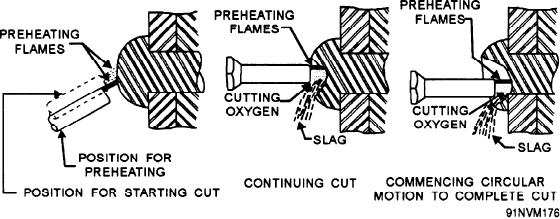
Figure 8-22.--Cutting buttonhead rivets with a low-velocity cutting tip.
in the carburizing flame ignites when it combines with
Special Cutting Techniques
the cutting oxygen deep in the kerf, thus increasing
Carbon steels containing up to 1.0 percent carbon
both the intensity and the distribution of the preheat.
are easily cut with the oxyacetylene cutting torch.
For cutting cast iron, the length of the feather on the
Nonferrous metals, however, and ferrous metals such
preheating flame should be approximately equal to the
as cast iron, carbon steels containing more than 1.0
thickness of the cast iron. A slightly less carburizing
percent carbon, and many alloy steels can be
flame is used for cutting stainless steel.
successfully flame cut only if special techniques are
INTRODUCTION OF IRON OR LOW-
used. These special techniques include using more
CARBON STEEL.--Introducing iron or low-carbon
intense and more widely distributed preheat; using
steel into the cutting area greatly simplifies the cutting
different flame adjustments; introducing iron or
of some metals. When the oxides of a metal have a
low-carbon steel into the cutting area; varying the
higher melting point than the metal itself, the oxides
torch movements; and using fluxes.
protect the base metal from the cutting action of the
PREHEAT.--Preheating the metal before cutting
oxygen. In such a metal, introducing iron or low-carb-
reduces the amount of oxygen and fuel gas required to
on steel into the cutting area solves the problem be-
make the cut. It also tends to prevent or minimize
cause the rapid oxidation of the iron or steel liberates
distortion and to prevent surface hardness of the piece
enough heat to melt the oxides that would otherwise
after the cut has been made. While preheating is
interfere with the cutting. When alloying elements are
helpful in any cutting operation, it is essential for some
responsible for the difficulty of cutting the metal, the
of the metals and alloys that are not easily cut. The
introduction of iron or low-carbon steel reduces the
preheating temperatures generally used for
percentage of these alloying elements and so makes
oxyacetylene cutting range from 200 to about 600F,
the metal easier to cut.
although considerably higher temperatures are
occasionally used.
Several techniques are used to introduce iron or
low-carbon steel into the cutting area. An easily cut
Preheating is usually accomplished by using the
steel waster plate may be clamped firmly to the surface
preheating orifices in the cutting tip. Special tips
of the metal to be cut; a steel welding rod may be fed
having larger and more numerous preheating orifices
into the kerf as the cutting proceeds; a bead of
are available for cutting cast iron and other materials
low-carbon steel may be deposited along the line of cut
that require intense and widely distributed preheat.
before the cut is made; or finely divided iron powder
Preheating furnaces are sometimes used to bring heavy
may be blown into the stream of cutting oxygen
sections to a uniform preheat temperature.
through special orifices in the cutting tip.
FLAME ADJUSTMENT.--A neutral preheat-
Cast iron, chromium irons, stainless steels, and
ing flame is used for most oxyacetylene cutting. For
various alloys having small ferrous content can be
some metals, however, other flame adjustments give
better results. For example, a highly carburizing flame
successfully cut with the oxyacetylene torch when iron
is used for preheating cast iron. The excess acetylene
or low-carbon steel is introduced into the cutting area.
8-19

